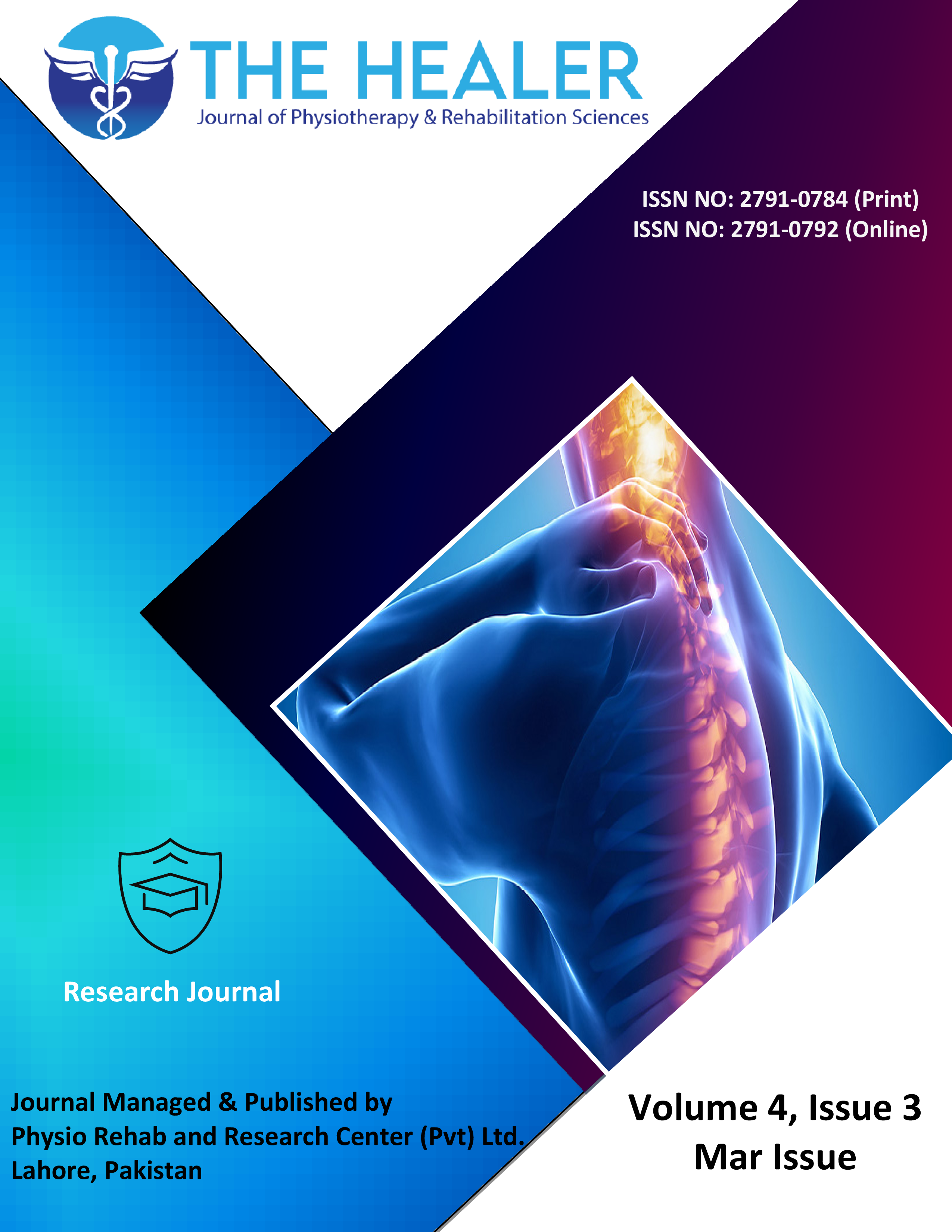Effects of Salah Postures on Balance in Geriatric Population; A Descriptive Study
Salah Postures and Balance in Geriatric Population
DOI:
https://doi.org/10.55735/hjprs.v4i3.242Keywords:
base of support, Berg balance scale, centre of mass, salah posturesAbstract
Background: Salah (performing namaz) by Muslims has 119 postures which are performed in one day and these postures require a stable balance to be maintained. Postures involved in Salah aid in the rehabilitation process in patients with neurological deficits and musculoskeletal impairments and have a good impact on the human brain as they aid in the activation of the peripheral nervous system and provide relaxation. Objective: To determine the effects of the postures of Salah on balance in the Geriatric Population. Moreover to focus on therapeutic benefits observed with performing various postures of Salah. Methods: Written and informed consent was taken from all the participants. Data was collected by employing a questionnaire that was distributed among the participants and was filled and then participants were tested for balance performance and were checked whether performing Salah had a significant role in maintaining balance or not. Participants were asked about their regularity of performing Salah, the regularity of their Salah, position of performing Salah, the presence of feelings of dizziness or any other symptoms by changing Salah postures and feelings of any difficulty in offering prayers. The Berg Balance Scale was employed for scoring balance. The p-value of 0.05 was considered significant. The Chi-Square test was used to determine the association between various variables involved in this current. Results are represented in the form of percentage tables, bar graphs and pie charts. Results: The results of our study showed us that there was statistically significant improved balance in the people who perform regular Salah and practice Salah postures correctly. 59.3% were females and 40.7% were male recruited in this study. The mean Berg Balance score was found to be 45.6 out of 56±11.7. Conclusion: This current study concluded a significant association between Salah posture and balance among elderly people There is a significant association between the mean of Berg balance score and the frequency of performing Salah per day by the participants. This study concludes that regular practice of Salah postures might aid in maintaining balance and aid in maintaining a good posture.
Downloads
References
CH C. Evaluation and management of daily self-care requirements. Rehabilitation medicine: Principles and Practice 1998: 145-7.https://cir.nii.ac.jp/crid/1571698599218634240
Yüksek S. The Effects of Performing Prayer on the Physical Fitness Levels of Men over 60 Years Old. Journal of Education and Training Studies 2017; 5(11): 56-63. https://eric.ed.gov/?id=EJ1157843
Reza MF, Urakami Y, Mano Y. Evaluation of a new physical exercise taken from salat (prayer) as a short-duration and frequent physical activity in the rehabilitation of geriatric and disabled patients. Annals of Saudi Medicine 2002; 22(3-4): 177-80. https://doi.org/10.5144/0256-4947.2002.177
Azam Khan RM, Joseph RS. The Impact of Regular Salah Practice on Balance and Fall Prevention among Community Dwelling Elderly Population. Indian Journal of Physiotherapy & Occupational Therapy 2023; 17(2). DOI: 10.37506/ijpot.v17i2.19228
Saniotis A. Understanding mind/body medicine from Muslim religious practices of Salat and Dhikr. Journal of Religion and Health 2018; 57: 849-57. https://doi.org/10.1007/s10943-014-9992-2
Mueller PS, Plevak DJ, Rummans TA. Religious involvement, spirituality, and medicine: implications for clinical practice. Mayo clinic proceedings; 2001: Elsevier; 2001. p. 1225-35.
https://doi.org/10.4065/76.12.1225
Chamsi-Pasha M, Chamsi-Pasha H. A review of the literature on the health benefits of Salat (Islamic prayer). Medical Journal of Malaysia 2021; 76(1): 93-7.
Misbah Ghous D, Malik A. Health Benefits of Salat (Prayer). Science 2016; 31: 07. DOI: 10.17957/TPMJ/16.3539
Khan RMA, Joseph RS. The Impact of Regular Salah Practice on Balance and Fall Prevention among Community Dwelling Elderly Population. Indian Journal of Physiotherapy & Occupational Therapy 2023; 17(2): 19-26. DOI: 10.37506/ijpot.v17i2.19228
Jin D-m, Yan T-b, Zeng H-h. Validity and reliability of Berg balance scale on assessing balance function. Chinese Journal of Rehabilitation Medicine 2003; 18(1): 25-7. https://doi.org/10.1016/S1836-9553(13)70161-9
Safee MKM. The Impact of Salat’s Positions on the Biomechanical Response of Human Muscle: University of Malaya (Malaysia); 20.
Nayab R, Khan B. The impact of islamic salah on balance and its implications for rehabilitation. Rehman Journal of Health Sciences 2023; 5(2): 75.
DOI: https://doi.org/10.52442/rjhs.v5i2.393
Ulfiana E, Dewi TP, Yusuf A. The effect of balance exercise on postural balance of elderly as fall prevention in institutionalized elderly. Indian Journal of Public Health Research & Development 2019; 10(8): 2708-12. DOI Number: 10.5958/0976-5506.2019.02279.4
Jalal AH. Morphological, neuromuscular and cardiovascular disease risk profiles among asymptomatic sedentary males performing Salaah (Islamic prayer): University of Johannesburg (South Africa); 2021. https://search.proquest.com/openview/0006874cb2449779228591dc3e827c25/1?pq-origsite=gscholar&cbl=2026366&diss=y
Boy E, Lelo A. Salat dhuha effect on oxidative stress in elderly women: A randomized controlled trial. Saudi Journal of Biological Sciences 2023; 30(4): 103603. https://doi.org/10.1016/j.sjbs.2023.103603

Downloads
Published
License
Copyright (c) 2024 The Healer Journal of Physiotherapy and Rehabilitation Sciences

This work is licensed under a Creative Commons Attribution 4.0 International License.













